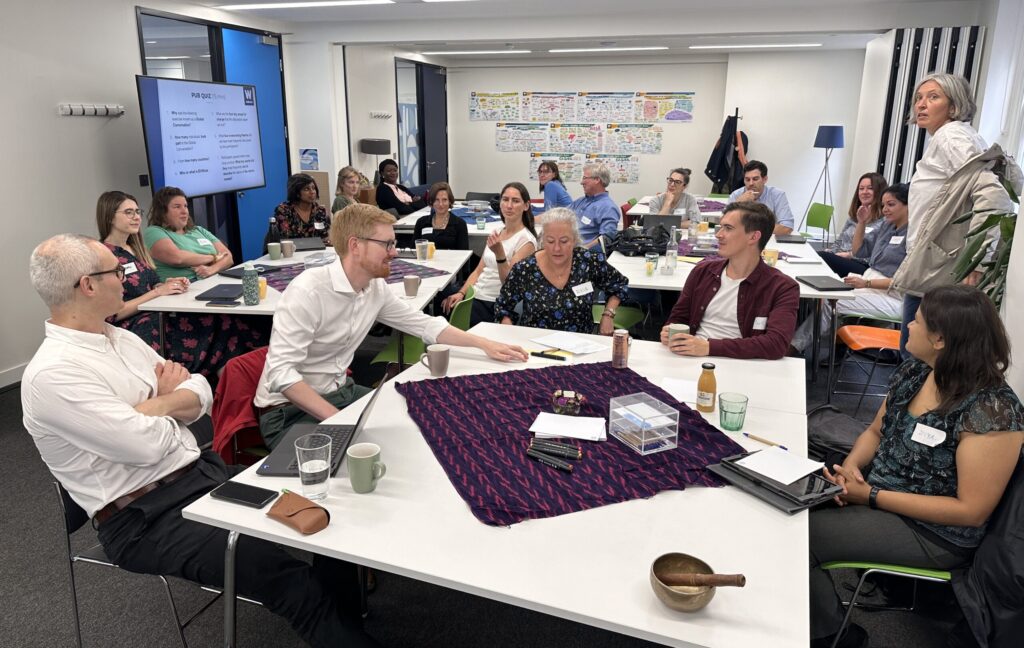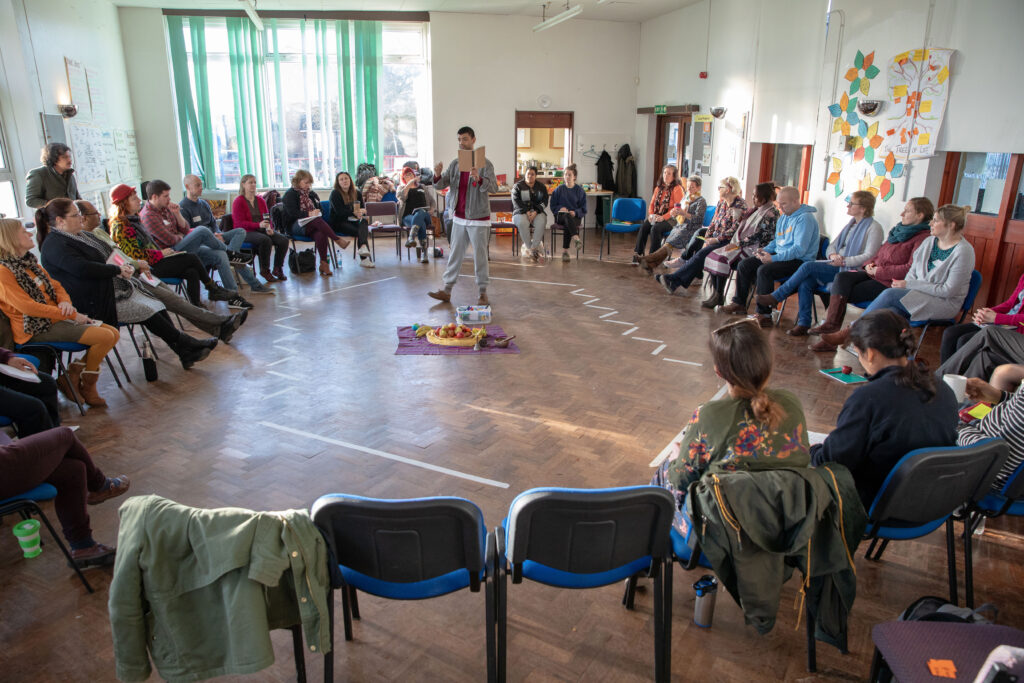Design Lab
Design Lab has been defined as:

Also known as Designing for Wiser Action, is a process created to give participants an opportunity to ask for help and the rest of us an opportunity to practice both design and generosity. This process demonstrates the power of co-creation through diversity of perspectives and working from a basis of clear purpose.
What is the Design Lab best used for?
It’s a perfect way to bring people from a community, a team, an organisation or a social ecosystem to codesign actions projects which will have an impact and might require collaboration or cross pollination to provide best possible results.
We’ve used it as a converging tool for strategic planning processes as a way to codesign some key actionables. We’ve also used it with funders who want to help people from communities to move project ideas from their heads and into paper creating an innovative and inclusive way of supporting people without experience of funding applications to apply for funding and get support in the development of their project plan.

It’s a great way to close a training session with a focus on putting learning into practice.
It’s a great way to support entrepreneurs with the development of new ideas through work with collective intelligence.
About the process

1 out of each 4-5 participants is invited to propose a project or piece of work and the rest are invited to support the proyect callers in 3 consecutive rounds of conversation to contribute to the thinking and design of actions that will bring it to life. They will find powerful insights and solutions through the exploration of questions that clarify:
What is the need? What is the purpose? Who is the group? What methods will most support the group into wise action? What kind of harvest will serve this wise action and demonstrate its impact? Who does this process best serve?
How does a design Lab work?
Designing for Wiser Action is about finding the clarity we need to progress real work. Therefore it is important the participants calling for help with their projects do so with the following criteria in mind:
- The project caller – have decided and is committed to following this through, have mandate or some beginning level of mandate to do it – from within and from decision makers in the system where the project will be put in motion
- The project caller – is ready to ask for and receive help from others as we practice co-designing
- The project should include at least one single meeting or be part of a longer strategic process
- The project should be of benefit to more people than just the project caller themselves
Roles
- One or two Hosts: Introduce the process to the group, host the callers into clarity prior to the process (and you may need to challenge them to name a concrete project with a clear purpose), and host the full group process.
- Project Caller: Is the person who wants helps on becoming clear and crafting focus, design and practice in action, applied to a particular event or events.
- Co-designers: Are the people who help with the frst brush strokes of co-creating design. This is a practice of generosity.

What does a Design Lab look like?
1- Make an invitation to those who want to be project callers (ideally at least 1-2 days prior to the process being hosted)
An Invitation is made to people so they can ask for help to design the process they want to host, with some support provided to help them get clear about their intention. This process needs concrete projects to work with, rather than a vague intention that is still being shaped. Callers are invited at least the night before the process will be hosted.

2- Introduction to the process
Participants are invited to call a project or piece of work they are responsible for and invite others to contribute to the thinking and design of actions that will bring it to life. Practitioners find powerful insights and solutions through the exploration of questions that clarify: What is the need? What is the purpose? Who is the group? What methods will most support the group into wise action? What kind of harvest will serve this wise action and demonstrate its impact?
3- Introduction of the projects
The callers gather in a circle at the center of the group. Ask each of the callers to pitch their project briefly. Each of the callers then stands in the room and others go to join them. Remind the group this is a time practice generosity, so share themselves for even numbers – next time could be their turn!
4- Round 1 – Group Work – Project design
Each group will move to its own table or room, starting with the caller introducing the project briefly to then all work together reviewing the calling question and sharing wise advice, insights, ideas and ask questions if needed to clarify the purpose and need. All group members co-create by populating the template with ideas on post it notes.
5- Round 2 – Peer Coaching
Project callers remain at their table and other participants travel in different directions to a new project. The caller briefly explains their project design to the peer group including any new learning and key insights from round one before turning their chair away (to break up empathy and enable constructive criticism, hard but with love and care). Participants have a conversation about the project whilst the project caller listens without intervening (only taking notes particularly of things they might find hard to hear)
6- Break/ Round 2 learning incorporation
Participants have a short break whilst project holders incorporate new learning from round 2 into their project plan, with some moral assistance from process hosts. What is the need? What is the purpose? Who is the group? What methods will most support the group into wise action? What kind of harvest will serve this wise action and demonstrate its impact?
7- Round 3 – Group Work – Sharpening design
Project holders remain at their table whilst participants go back to the table they worked with during round 1. Together learning is incorporated including any cross pollination arising from round 2 into the refining and sharpening of the project design.

8- Circle of Gratitude/ Report back:

